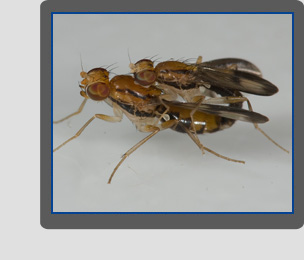| |
 
General & Distribution
The two eastern North American species of Clusia, C. czernyi and C. lateralis, are (along with some Clusiodes species) among the most common Clusiidae in eastern Canada and the northeastern USA. Clusia species are less common in the southeastern United States, where C. lateralis is the more widespread of the two Clusia species.
Similar species
Clusia czernyi and C. lateralis are easy to distinguish on the basis of wing pattern. Clusia czernyi has a medial wing bar forming a C-shaped pattern with the distal bar, while C. lateralis lacks this additional marking. Clusia czernyi also has only one pair of lateral scutellar bristles, not two like C. lateralis. The remaining nearctic Clusia, C. occidentalis, has a similar wing, but it is much paler and is only found in the west.
 Biology & Collection Biology & Collection
These two eastern species of Clusia are frequently encountered and occasionally accumulate in significant numbers in Malaise traps, but large numbers of specimens are rarely encountered together in any one place. In addition to being found on foliage, both species are often found on dead, standing tree trunks (almost always deciduous), unlike other Clusiidae, which are most often seen on fallen dead wood. Clusia czernyi has also been collected in a “forest plain”, a “dry mixed forest” and a “maple forest with fern undergrowth”.
Melander & Argo (1924) found Clusia czernyi to be most abundant from May to June, and C. lateralis to be most abundant later in June and July. In Ontario, specimens of C. czernyi have been collected from the beginning of May to the third week in August, with the majority of specimens found from May 26-July 1 with a peak in mid June. Comparatively, C. lateralis has been collected from the last week in May to the first few days in September, with the highest peak occurring one week after the peak of C. czernyi; a second smaller peak seems to appear in the second week of August, three weeks after a severe population drop. |
|
 |